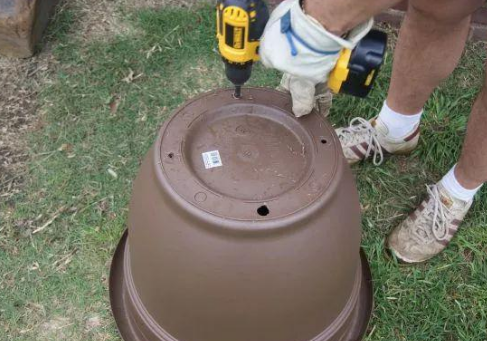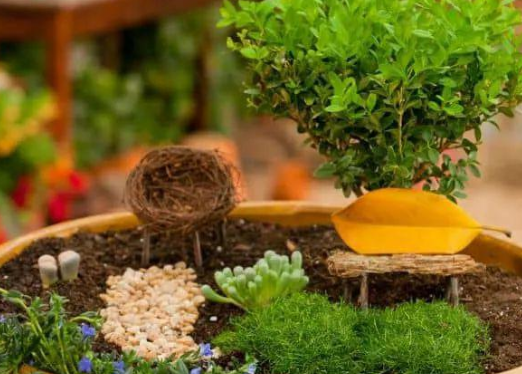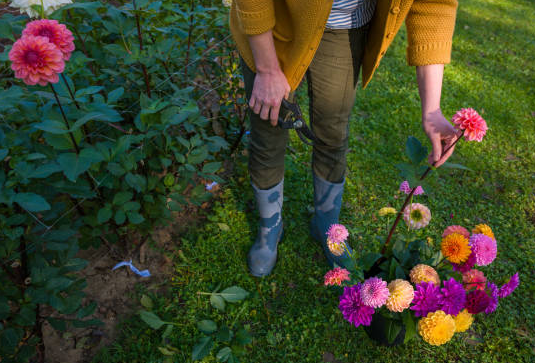As living spaces get smaller, it becomes harder to have a garden where you can grow flowers and vegetables. For those living in cities, potted plants are the best option. They’re portable, versatile, and perfect for urban environments. If you’re new to gardening, these 12 flower care tips will help you succeed.
Choose the Right Pot Size
When planting potted plants, bigger isn’t always better. It’s best to choose a pot that’s about the same size as the plant’s root ball. The pot should have a large drainage hole at the bottom to prevent water from accumulating. For beginners, terracotta, ceramic, or plastic pots are good choices. If the pot is too big for a small plant, the soil will retain excess moisture, which can hinder plant growth.

Drainage is Crucial
The drainage of a pot is just as important as its size. Ideally, the pot should have multiple drainage holes. You can even place some broken pieces of ceramic or stones at the bottom of the pot to prevent the soil from blocking the drainage holes.
Opt for Dwarf Varieties
It’s best to choose smaller, compact plants for pots. Tall plants often require regular pruning, and once they grow too high, they need to be pinched back. Smaller varieties will thrive better in containers. If you’re looking for small plants, consider dwarf varieties, which prefer smaller pots.
Use Light-Colored Pots
Light-colored pots are a great choice because they absorb less heat. They help keep the roots cool and moist, promoting healthy growth. During summer, light-colored pots can protect the roots from overheating. If your plant prefers warmth, then go for a darker pot.

Proper Placement is Key
When caring for potted plants, make sure to place them in the right spot. Newly purchased plants shouldn’t be placed in direct sunlight right away, even if they love full sun. Let them acclimate in a shaded area before introducing them to more intense sunlight.
Save Seeds
You can try pollinating your flowers yourself to collect seeds. Pollinate during the flowers’ peak blooming period for the best success rate. Use a soft brush or a small paintbrush to transfer pollen from the stamens to the pistils. Once the flowers are pollinated and the seeds are fully mature, collect them and store them in a cool, dry place.
Cover the Soil
A layer of mulch or other materials on top of the soil can help prevent moisture loss. If your plant doesn’t like dry conditions or too much sun, you can cover the soil with straw, hay, or well-rotted wood chips to keep the plant healthy and shield it from excessive heat.
Paint Your Pots
If you’re tired of the plain look of your flower pots, you can decorate them with paint. Use waterproof, non-toxic paint to add vibrant colors, and they’ll stay bright even under the sun. This is a fun way to unleash your creativity and improve your gardening skills.
Watering Tips
Early morning is the best time to water your plants. If it’s a sunny summer day, evening can also be a good time. In winter, water after the sun comes out. For indoor plants, simply water until the soil is fully saturated. Plants that love moisture should be kept evenly moist during the growing season.

Easy-to-Grow Plants
If you’re not confident in your gardening skills, start by growing vegetables. They’re easy to grow and you’ll feel accomplished. Many vegetable seeds sprout easily, and with proper watering and sunlight, they’ll thrive within a few weeks.
Ideal beginner vegetables include lettuce, chives, green onions, and garlic. These vegetables are easy to grow, require little care, and have shallow roots, making them perfect for small pots.
Use a Plant Stand
As you accumulate more potted plants, things can get messy. Consider getting a plant stand to keep your plants organized and display them beautifully. For plants that need to be moved often, you can use a rolling plant stand with wheels at the bottom.
DIY Flower Pots
Gardening doesn’t require you to buy expensive pots. You can repurpose old containers at home into flower pots. Just make sure to drill drainage holes at the bottom and sides for proper drainage. This will create simple, rustic pots that work just as well as store-bought ones.

